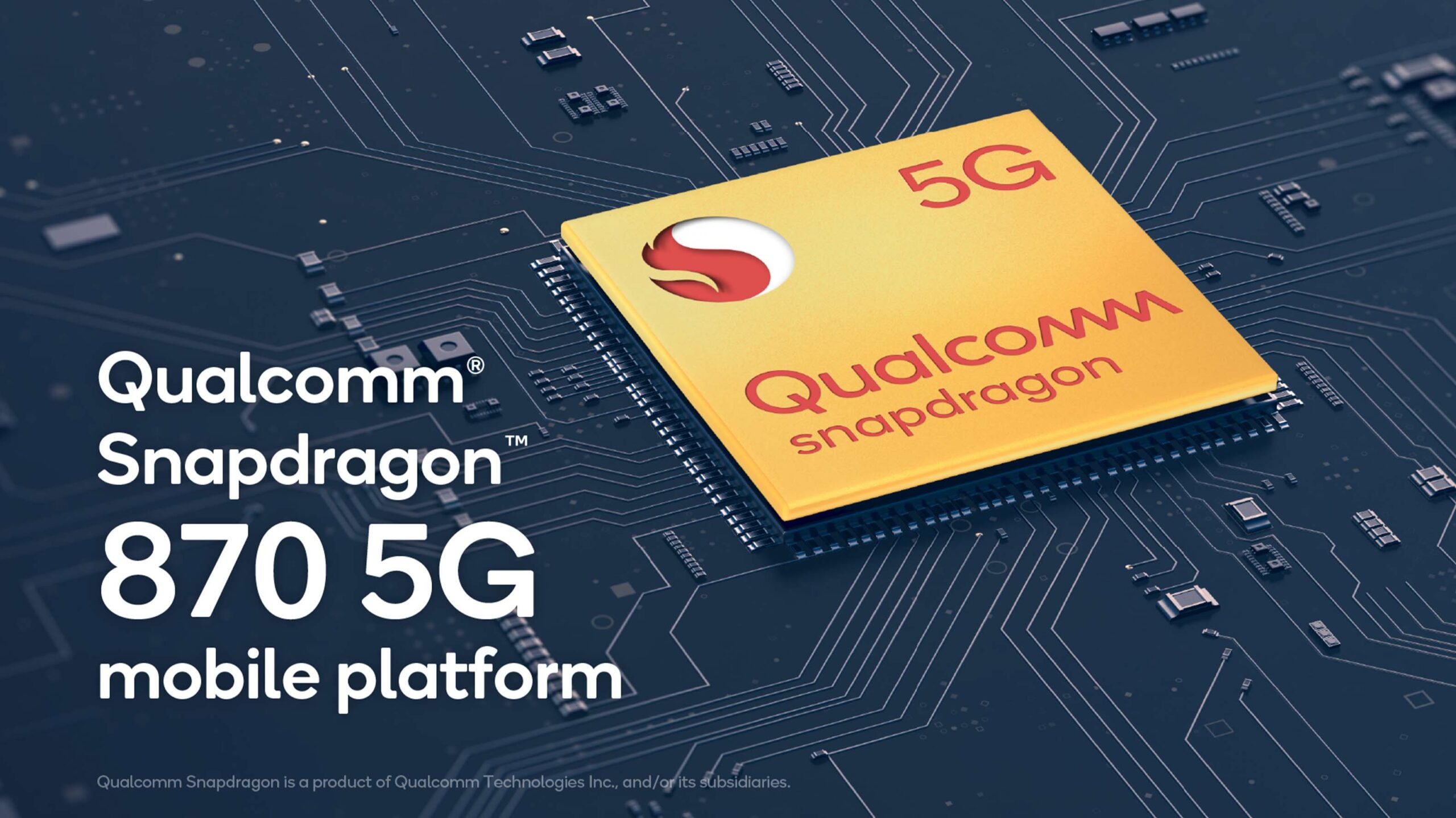
Qualcomm announced its latest Snapdragon system-on-a-chip (SoC), the Snapdragon 870 5G.
The new 870 is a follow-up to last year’s Snapdragon 865 and 865 Plus, boasting an enhanced Qualcomm Kryo 585 CPU with a clock of up to 3.2GHz. Qualcomm says the 870 will deliver increased performance across the board, but especially in gaming applications, 5G and artificial intelligence (AI).
“Building upon the success of Snapdragon 865 and 865 Plus, the new Snapdragon 870was designed to address OEM and mobile industry requirements. Snapdragon 870 will power a selection of flagship devices from key customers including Motorola, iQOO, OnePlus, OPPO, and Xiaomi,” said Kedar Kondap, vice president of product management at Qualcomm in a press release.
However, other than the higher CPU clock speed, there’s little difference between the 870, 865 Plus and 865. Qualcomm says the 865 runs at up to 2.84Ghz, the 865 Plus at up to 3.1GHz and, as mentioned up top, the 870 clocks in at 3.2GHz.
Beyond that, the 870 sports the same Adreno 650 GPU, 5th-gen Qualcomm AI engine, Snapdragon X55 modem, FastConnect 6800 and Spectra 480 image signal processor (ISP). Ultimately, it seems like the Snapdragon 870 will offer a very similar experience to Qualcomm’s other 800-series 2020 chips, albeit slightly faster.
Interestingly, the 870 also has a higher clock speed than Qualcomm’s new Snapdragon 888 SoC at 2.84GHz, although the 888 also has the newer Kryo 680 CPU, Adreno 660 GPU, Snapdragon X60 modem, Spectra 580 ISP.
It’ll be interesting to see how the 870’s real-world performance stacks up to other chips once it’s available.
Qualcomm expects commercial devices based on the 870 to be announced in Q1 2021. You can learn more about the Snapdragon 870 here.
MobileSyrup may earn a commission from purchases made via our links, which helps fund the journalism we provide free on our website. These links do not influence our editorial content. Support us here.


